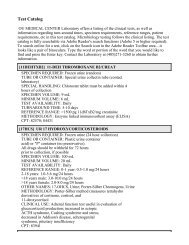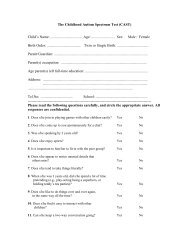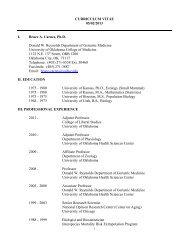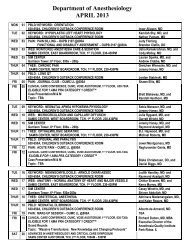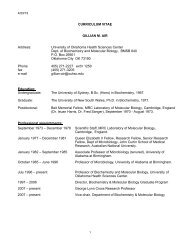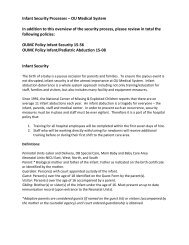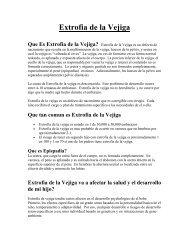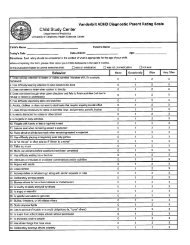Communities Advancing Resilience Toolkit (CART ... - OU Medicine
Communities Advancing Resilience Toolkit (CART ... - OU Medicine
Communities Advancing Resilience Toolkit (CART ... - OU Medicine
You also want an ePaper? Increase the reach of your titles
YUMPU automatically turns print PDFs into web optimized ePapers that Google loves.
What to map<br />
� Homes, businesses, schools, churches, and community and homeowner centers<br />
� Hospitals, clinics, nursing homes, and assisted living facilities<br />
� Fire department, police department, post office, and other government offices<br />
� Communication infrastructure including, for example, radio relay and cell towers<br />
and cable and phone lines<br />
� Locations where supplies and equipment for disaster response may be available<br />
� Utilities (above and in ground) such as natural gas meters, propane tanks, oil<br />
tanks, gas lines, power lines, water tanks, irrigation delivery structures, wells, fire<br />
hydrants, and street lights<br />
� Terrain features such as canals, lakes, mountains, washes, streams, and parks<br />
� Transportation infrastructure including, for example, airports; train, bus, and light<br />
rail stations; railroad and light rail tracks; and fuel stations<br />
� Other relevant structures and features<br />
Instructions<br />
Step 1: Define the boundaries of your neighborhood. These may be natural boundaries<br />
created by terrain features or traditionally recognized boundaries known to local<br />
residents. Officially designated boundaries may be used if official boundaries dictate<br />
significantly the flow of resources into the neighborhood. Start with a relatively small<br />
geographic area. You can extend your map outward over<br />
time. Prepare a grid with defined boundaries.<br />
Step 2: Walk (or drive) through your neighborhood<br />
recording on your grid the names of streets; the location<br />
of homes, businesses, and other structures; and<br />
significant terrain features. If possible, note the highest<br />
and lowest terrain. Record identifying information for<br />
structures such as house and business address numbers.<br />
Locate light poles, traffic lights, and stop signs. Identify GPS coordinates for major sites<br />
such as hospitals, schools, fire department, and police department.<br />
<strong>Communities</strong> <strong>Advancing</strong> <strong>Resilience</strong> <strong>Toolkit</strong> (<strong>CART</strong>) Page 30



